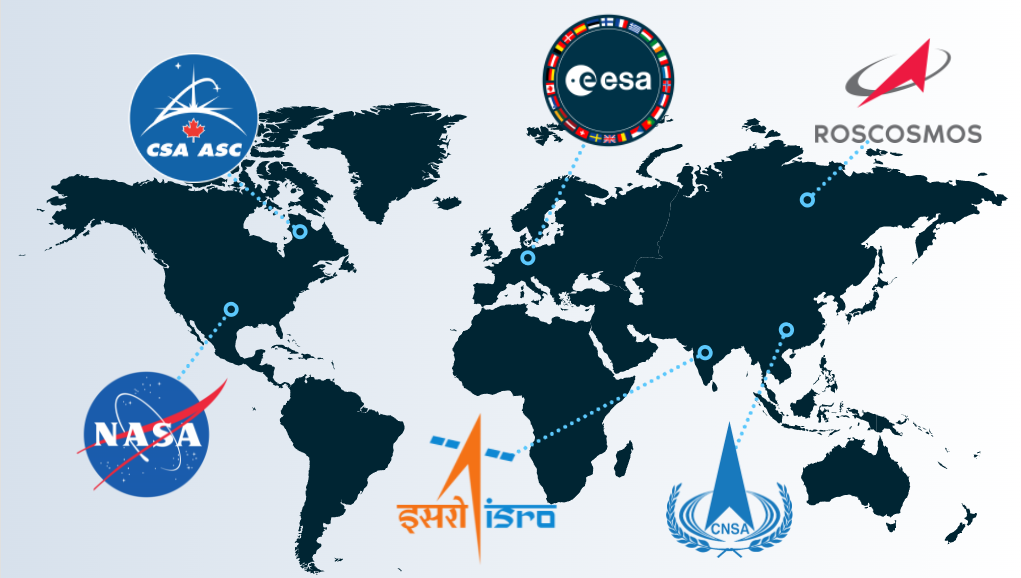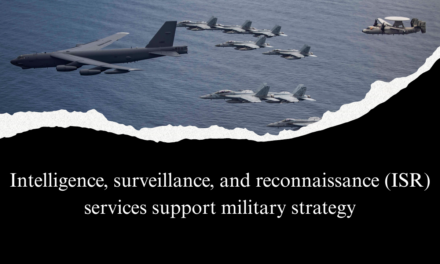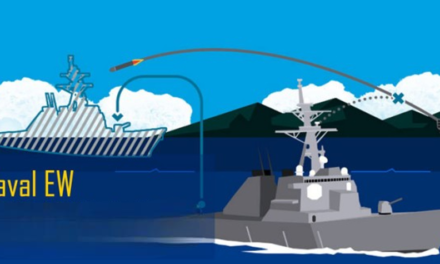Space agencies such as NASA (USA), ESA (Europe), ISRO (India), and Roscosmos (Russia) play pivotal roles in advancing space exploration. They drive innovation, foster international collaboration, and spearhead ambitious missions that expand humanity’s understanding of the cosmos. Here’s an in-depth look at their contributions:
1. Pioneering Scientific Research
- Objective: Space agencies lead the quest to answer fundamental questions about the universe, Earth, and life itself.
- Contributions:
- NASA:
- Conducts deep-space exploration missions (e.g., Mars rovers, Voyager probes).
- Operates cutting-edge telescopes like the James Webb Space Telescope (JWST).
- ESA:
- Focuses on studying the Sun, exoplanets, and gravitational waves (e.g., Solar Orbiter, CHEOPS).
- Leads Earth observation programs like Copernicus.
- ISRO:
- Investigates planetary science with missions like Chandrayaan (lunar exploration) and Mangalyaan (Mars Orbiter Mission).
- Roscosmos:
- Conducts long-term research on human spaceflight through the International Space Station (ISS).
- Explores the Moon with Luna missions.
- NASA:
2. Driving Technological Innovation
- Objective: Space agencies develop advanced technologies that support space exploration and find applications in everyday life.
- Contributions:
- NASA:
- Innovations like GPS, satellite communications, and robotics.
- Development of reusable rockets (e.g., partnerships with SpaceX and Blue Origin).
- ESA:
- Pushes advancements in autonomous spacecraft and electric propulsion systems (e.g., BepiColombo mission to Mercury).
- ISRO:
- Cost-efficient launch systems like the Polar Satellite Launch Vehicle (PSLV) and GSLV Mk III.
- Miniaturization of satellite technology for small and nano-satellites.
- Roscosmos:
- Expertise in human-rated spacecraft like Soyuz and heavy-lift launch vehicles like Proton-M.
- NASA:
3. Enabling Human Spaceflight
- Objective: Expand human presence in space through research, infrastructure, and interagency collaboration.
- Contributions:
- NASA:
- Led the Apollo Moon landings and now spearheads the Artemis program to return humans to the Moon.
- Conducts long-duration human missions aboard the ISS.
- ESA:
- Contributes to human spaceflight through the European Service Module for NASA’s Orion spacecraft.
- Sends European astronauts to the ISS for scientific research.
- ISRO:
- Developing its Gaganyaan program for India’s first crewed space mission.
- Roscosmos:
- Operates the Soyuz spacecraft, a workhorse for human spaceflight.
- Key player in supporting ISS operations and astronaut training.
- NASA:
4. Advancing Planetary Exploration
- Objective: Lead missions to study planets, moons, and other celestial bodies, expanding our understanding of the solar system.
- Contributions:
- NASA:
- Mars Exploration: Perseverance rover, Ingenuity helicopter, and plans for Mars Sample Return.
- Outer Planets: Missions like Juno (Jupiter) and Europa Clipper.
- ESA:
- ExoMars program: Rosalind Franklin rover (planned for 2028).
- JUICE mission to study Jupiter’s icy moons.
- ISRO:
- Mars Orbiter Mission (MOM), India’s first interplanetary mission.
- Chandrayaan lunar missions, including Chandrayaan-3’s successful landing on the Moon’s south pole.
- Roscosmos:
- Luna program: Revitalized lunar exploration efforts.
- Collaborative missions with ESA for planetary studies.
- NASA:
5. Earth Observation and Climate Monitoring
- Objective: Monitor Earth’s climate, natural resources, and disasters for sustainability and safety.
- Contributions:
- NASA:
- Operates Earth observation satellites like Landsat and Terra.
- Tracks climate change, atmospheric conditions, and global sea levels.
- ESA:
- Runs the Copernicus program, one of the largest Earth observation initiatives.
- Develops satellites for environmental monitoring (e.g., Sentinel series).
- ISRO:
- Provides disaster management support through remote sensing satellites (e.g., RISAT, CARTOSAT).
- Monitors agricultural patterns, deforestation, and water resources.
- Roscosmos:
- Supports global climate studies with Earth observation satellites like Meteor-M.
- NASA:
6. Facilitating International Collaboration
- Objective: Foster global partnerships for large-scale missions and knowledge-sharing.
- Contributions:
- NASA:
- Collaborates with ESA, JAXA, and others on missions like the ISS, James Webb Space Telescope, and Mars Sample Return.
- ESA:
- Works with NASA on JWST and the Artemis program.
- Partners with Russia on ExoMars and other missions.
- ISRO:
- Collaborates with countries like France, the USA, and Russia for satellite launches and scientific missions.
- Joint development of payloads, such as Argos for climate monitoring.
- Roscosmos:
- Founding partner of the ISS, providing critical modules and support.
- Collaborates with China on lunar and planetary exploration programs.
- NASA:
7. Promoting Space Sustainability
- Objective: Address challenges like space debris, orbital congestion, and sustainable exploration practices.
- Contributions:
- NASA:
- Develops guidelines for sustainable use of space through programs like CSpO (Consortium for Space Policy Oversight).
- ESA:
- Invests in active debris removal technologies (e.g., ClearSpace-1).
- ISRO:
- Designs satellites with built-in deorbiting mechanisms to reduce debris.
- Roscosmos:
- Works on guidelines for long-term sustainability of near-Earth space.
- NASA:
8. Inspiring Public Engagement and STEM Education
- Objective: Inspire future generations and foster interest in science, technology, engineering, and mathematics (STEM).
- Contributions:
- NASA:
- Engages the public through programs like the “Send Your Name to Mars” initiative.
- Offers educational resources for students and teachers worldwide.
- ESA:
- Hosts outreach programs like ESA Kids and astronaut training broadcasts.
- ISRO:
- Captivated public imagination with missions like Chandrayaan and Mangalyaan.
- Roscosmos:
- Shares milestones and research findings with global audiences.
- NASA:
9. Advancing Space Commercialization
- Objective: Partner with private companies to expand the space economy.
- Contributions:
- NASA:
- Collaborates with companies like SpaceX, Boeing, and Blue Origin for crewed and uncrewed missions.
- ESA:
- Encourages European startups to innovate in satellite technology and data services.
- ISRO:
- Supports commercial satellite launches through its Antrix and NSIL arms.
- Roscosmos:
- Offers commercial satellite launch services through its Soyuz program.
- NASA:
Conclusion
Space agencies like NASA, ESA, ISRO, and Roscosmos are essential for advancing space exploration. Their contributions extend from pioneering scientific research and developing cutting-edge technologies to fostering international collaboration and addressing global challenges. Together, they enable humanity to explore the cosmos and use space for the betterment of life on Earth.
Hashtags
#GlobalSpaceAgencies #LeadingSpaceExploration #SpaceAgencyInnovation #ExploringWithNASA #ESAAdvancesInSpace #ISROMissions #RoscosmosExploration #SpaceAgencyPartnerships #InternationalSpaceCollaboration #GlobalSpaceExplorationEfforts #AlliedSpaceMissions #TechnologicalAdvancements #SpaceTechLeaders #InnovativeSpaceMissions #AdvancedSpaceTechnology #NextGenExplorationTech #NotableMissions













